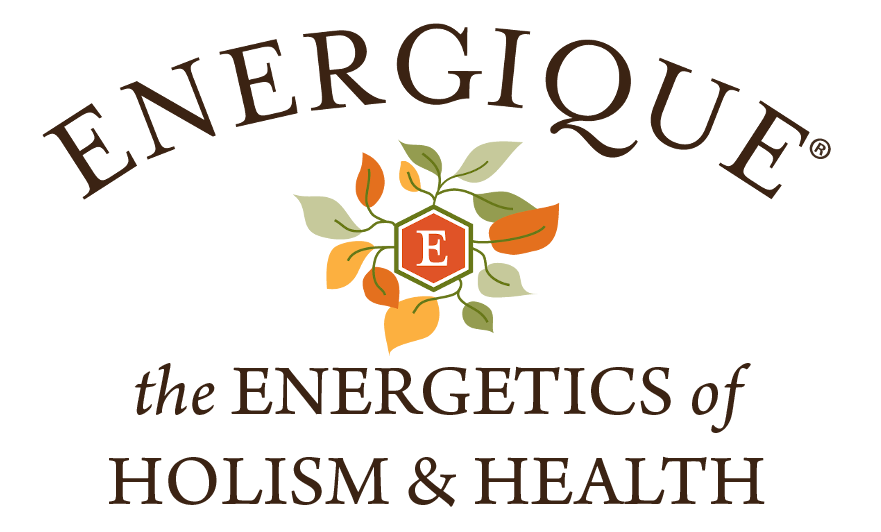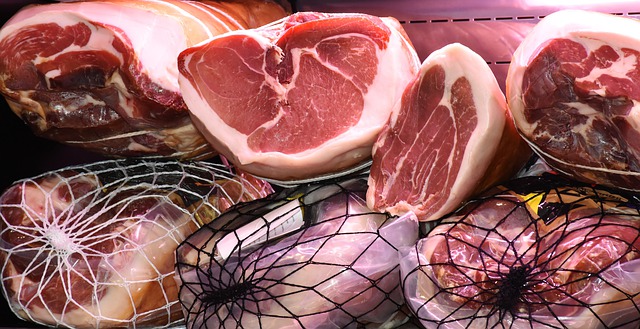 Ian Spohn, ND, is a staff naturopathic doctor for Energique who enjoys challenging the dogmas of both conventional and alternative medicine. He is a passionate supporter of the paleo diet and classical homeopathy.
Ian Spohn, ND, is a staff naturopathic doctor for Energique who enjoys challenging the dogmas of both conventional and alternative medicine. He is a passionate supporter of the paleo diet and classical homeopathy.
A number of health benefits have been anecdotally attributed to the carnivore diet, which is presently gaining popularity despite flying in the face of conventional dietary advice. The beneficial effects claimed by its early adopters may be summarized as more stable mood, better blood sugar control, effortless weight loss, increased libido, and most notably, the improvement of various autoimmune conditions. The only real disadvantages that have regularly been reported (again, anecdotally) are higher cholesterol levels and in some cases transient symptoms of riboflavin deficiency, which tend to be easily cured by eating liver. Contrary to expectations, many who have tried the diet report improved digestion despite an utter lack of dietary fiber, proving that while fiber might still be beneficial, it is certainly not essential. In fact, as much as meat has been demonized, an analysis of its nutritional content makes it appear rather to be one of the greatest health foods of all time. Broadly defined as the flesh of a dead animal, meat is essentially a complete source of every essential amino acid, including taurine and carnitine, every essential fatty acid, every B vitamin, including being the only source of vitamin B12, the only source of preformed vitamin A, one of the very few sources of vitamin K2, easily the best source of iron and zinc, and one of the best sources of the antioxidant trace mineral selenium (though brazil nuts are admittedly a better source). In fact, meat alone seems to provide every nutrient required for health, with one glaring and often cited exception: vitamin C.
And yet, many people seem to do just fine on the carnivore diet, even without supplementing vitamin C. In fact, it has been known since 1930 that it is possible to survive long-term on an all meat diet. In 1929 two arctic explorers, Vilhjalmur Stefansson and Karsten Andersen, inspired by their experience with the traditional Inuit diet, decided to prove a point by maintaining an all-meat diet for a full year under medical observation. Their dietary intake consisted of 1.75 lbs of meat per day, including muscle meat, liver, brain, bone marrow, and bacon. Surprisingly, they both remained in good health throughout the study’s duration, experiencing modest weight loss early in the diet and shockingly, despite their high protein intake, maintaining perfect kidney function. The only adverse symptom attributed to the all-meat diet was some diarrhea early on in the experiment, which resolved when the participants reduced their protein intake by replacing leaner cuts with fat. Stefansson also developed strong cravings for calf’s brain during the experiment, of which he ate freely[i].
The experiences of Stefansson and Andersen, as well as the Inuit who maintain an almost plant-free diet, have been used by modern carnivores to argue that vitamin C is not actually essential to the body. If it was, how could people survive so long without it? Part of the answer resides in the fact that contrary to misinformation spread by food labeling and nutrition authorities, meat actually does have more than the 0 grams of vitamin C typically reported. All muscle meat indeed contains small quantities of vitamin C, with liver, brain, and interestingly, skin having particularly high concentrations. Cooking or preserving meat will reduce or eventually eliminate its vitamin C content, but even boiled meat retains some vitamin C, while even more remains intact in the broth. In fact, when the Inuit diet was analyzed for its vitamin C content, it was estimated that their mean vitamin C intake was 30mg per day, which is twice the value established to prevent scurvy. Even in the complete absence of plant foods, daily vitamin C intakes would occasionally exceed 100mg per day, usually when they indulged in muktuk, a delicacy consisting of raw seal blubber which happens to be quite rich in vitamin C[ii].
A number of other factors have been identified to explain why the carnivore diet works despite its relatively low vitamin C content:
- The inclusion of liver, and in a traditional diet the adrenal glands and skin, can in fact supply rather large quantities of vitamin C in the absence of plant foods.
- Eating meat rare or raw (the Inuit often eat raw frozen meat), or cooking it by boiling and then drinking the broth, enhances the vitamin C content substantially relative to the meat typically consumed in a conventional diet.
- Glucose, which is structurally almost identical to vitamin C, competes for its absorption in the body. A carnivorous diet very low in carbohydrates seems to reduce the daily intake of vitamin C necessary to prevent scurvy, probably by allowing for its greater absorption.
- Meat is extremely rich in the conditionally essential amino acid carnitine. The body can make carnitine, but it requires vitamin C as a cofactor. Therefore, a high carnitine intake will reduce the body’s need for vitamin C.
- Meat contains hydroxylated proline. This fact might be the key to why a carnivorous diet does not result in scurvy. The main symptoms of scurvy result from a failure to maintain connective tissue. The unique properties of collagen proteins, which make up connective tissue, are due to their high concentration of hydroxylated proline residues. The hydroxylation of proline to form connective tissue is something that doesn’t occur in plants, meaning that while the amino acid proline can be obtained from plant protein, its hydroxylated form can only be obtained from animal protein. Luckily the body is able to hydroxylate proline on its own, explaining why vegans don’t suffer from widespread connective tissue breakdown, but vitamin C is required as a cofactor in this reaction. Without access to hydroxylated proline residues, the connective tissue cannot be maintained and scurvy ensues. So to prevent scurvy, one actually has in essence two options: consume a lot of animal protein as a source of hydroxylated proline, or simply consume the combination of plant protein and vitamin C. Serendipitously, most plant foods tend to be high in vitamin C to begin with, though the edible grains of plants are a somewhat notable exception. It’s likely that the scurvy developed by 19th century sailors was not due to a lack of fresh fruit in their diet; rather it was due to their combined lack of fresh fruit and/or animal protein. Having very little access to fresh food of any kind on a ship, and being forced to subside for long periods on a diet of basically processed carbohydrates in the form of hardtack biscuits, was likely the actual cause. And while scurvy can obviously be cured by eating limes, it can in fact be cured just as easily by eating fresh meat, as Napoleon’s starving soldiers proved when they cured a bout of scurvy by simply slaughtering and eating their horses.
Therefore, while it certainly is possible to thrive on an all-meat diet, this fact does not prove that humans do not need vitamin C after all. We remain, like primates and guinea pigs, one of very few animals who cannot synthesize our own vitamin C, and people do still get scurvy and die when the diet does not provide any vitamin C. This begs the question that while the carnivore diet may be possible, is it truly optimal, as its adherents claim? Critics of the carnivore diet cite vitamin C’s known antioxidant function as a compelling reason to maximize one’s intake by eating fruits and vegetables. Then again, the body has numerous other antioxidant options available – the glutathione system, the selenomethionine system, the ubiquitous presence in every cell of the cholesterol-derived antioxidant ubiquinol, even uric acid functions as an antioxidant, something which one should have no lack of on an all-meat diet.
Still, it seems ridiculous to limit vitamin C for nothing more than a dogmatic aversion to plant foods. Another benefit of vitamin C, beyond its ability to prevent scurvy, is its complex function within the adrenal glands. The adrenals have one of the highest concentrations of vitamin C in the entire body, and seem to actually secrete vitamin C as part of the stress response[iii]. When guinea pigs, one of the few animals who like humans cannot synthesize vitamin C, are deprived of vitamin C in their diet, their cortisol levels rise commensurately as their vitamin C levels fall[iv], suggesting a possible reciprocal relationship between vitamin C and cortisol. Interestingly, one of the few plants regularly consumed by the Inuit is the root of Hedysarum alpinum[v], a plant found near the Arctic Circle which is closely related to the adaptogen licorice. Maybe the extra adrenal support helps them cope with their marginal vitamin C intake?
In my own personal experience I’ve gone as long as 30 days on a carnivorous diet, and I recently concluded an experiment of several months on a nearly carnivorous diet, only eating plants incidentally or on occasion. I can confirm the experience of others that I felt just fine and didn’t experience any signs of nutrient deficiency, but I can also say in all honesty that I cannot, from my experience, recommend limiting or eliminating plant foods. While I definitely notice an increase in my overall wellbeing when I eat more meat, the returns from this begin to diminish long before my meat intake approaches 100% of my diet. Going from a paleo-type diet with an already high meat intake to a truly carnivorous diet, I experienced absolutely no additional benefits whatsoever. This leads me to wonder if the benefits noted by so many people on the carnivore diet are truly due to their strict avoidance of plants, or simply due to the increased meat intake relative to a conventional diet. One adverse effect I experienced when cutting plants from my diet was a noticeably reduced tolerance to stress, leading me to wonder if my decreased vitamin C intake was not chronically elevating my cortisol levels. Since resuming regular intake of fruits and vegetables I’ve noticed a significant rebound in my mood, creativity, and overall enthusiasm for things, as well as improved exercise performance which I attribute to a marked increase in my consumption of plant-based carbohydrates. I’m also taking Energique’s C-TR 1500mg to replenish my vitamin C levels, and the spagyric herbal Eleuthero to support my weary adrenals. As winter is often a stressful time in general, be sure to remember adrenal support for your patients as part of a holistic protocol, and be wary of the recent hype surrounding the carnivore diet.
[i] McLellan, Walter S. and Du Bois, Eugene F. Clinical Calorimetry: XLV. Prolonged meat diets with a study of kidney function and ketosis. The Journal of Biological Chemistry, 1930; 87: 651-68.
[ii] Geraci, Joseph R. and Smith, Thomas G. Vitamin C in the diet of Inuit hunters from Holman, Northwest Territories. Arctic, 1979; 32(2): 135-39.
[iii] Padayatty S, Doppman J, Chang R, Wang Y, Gill J, Papanicolaou D, Levine M. Human adrenal glands secrete vitamin C in response to adrenocorticotrophic hormone. The American Journal of Clinical Nutrition, 2007; 86(1): 145–149.
[iv] Odumosu, A. Ascorbic acid and cortisol metabolism in hypovitaminosis C guinea pigs. International Journal for Vitamin and Nutrition Research, 1982; 52(2): 176-85.
[v] Geraci and Smith, 1979.
Any homeopathic claims are based on traditional homeopathic practice, not accepted medical evidence. Not FDA evaluated.
These statements have not been evaluated by the Food and Drug Administration. These products are not intended to diagnose, treat, cure, or prevent any disease.

